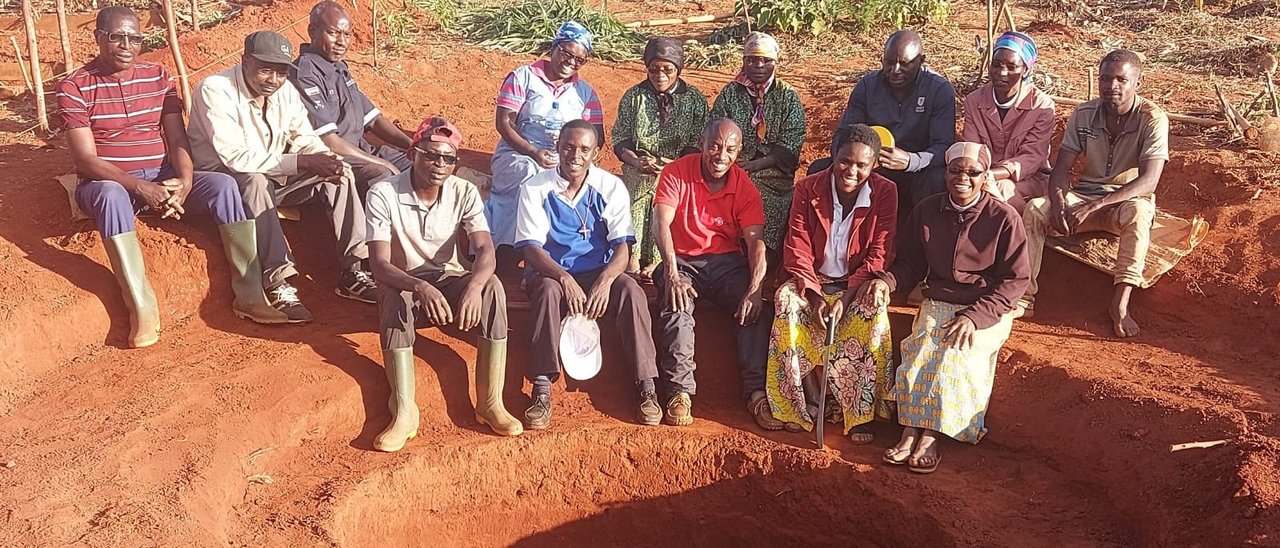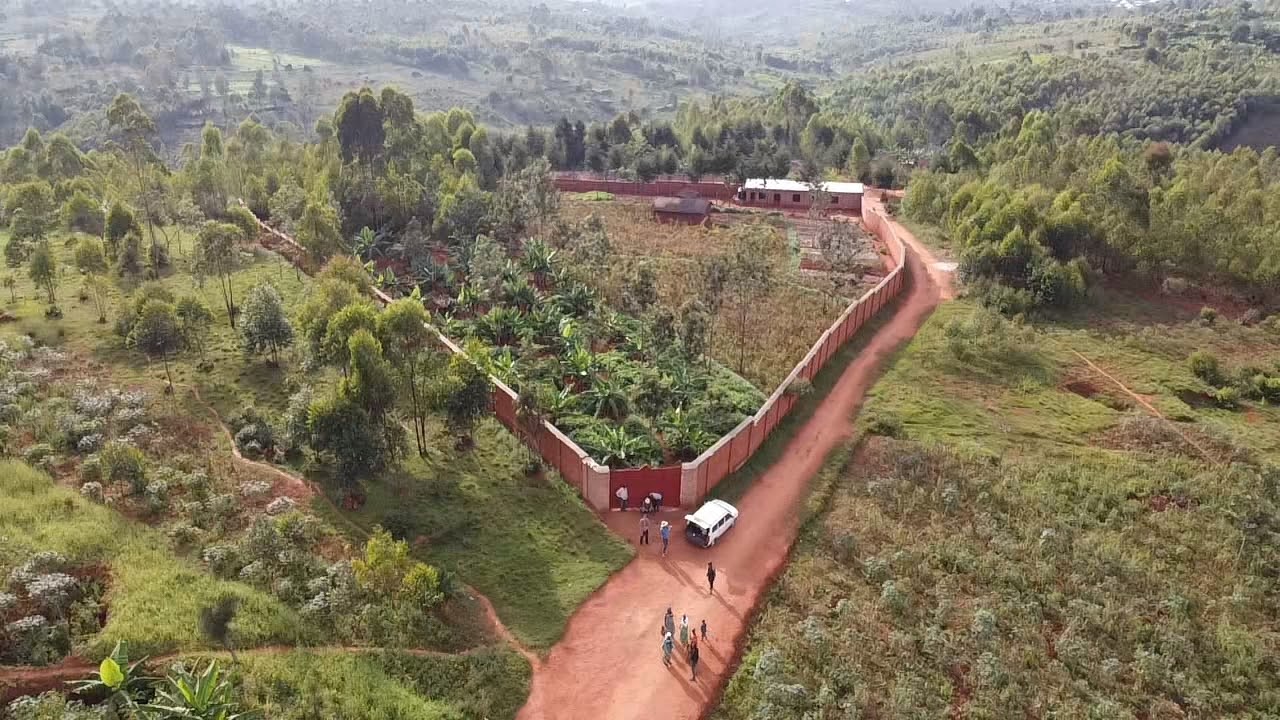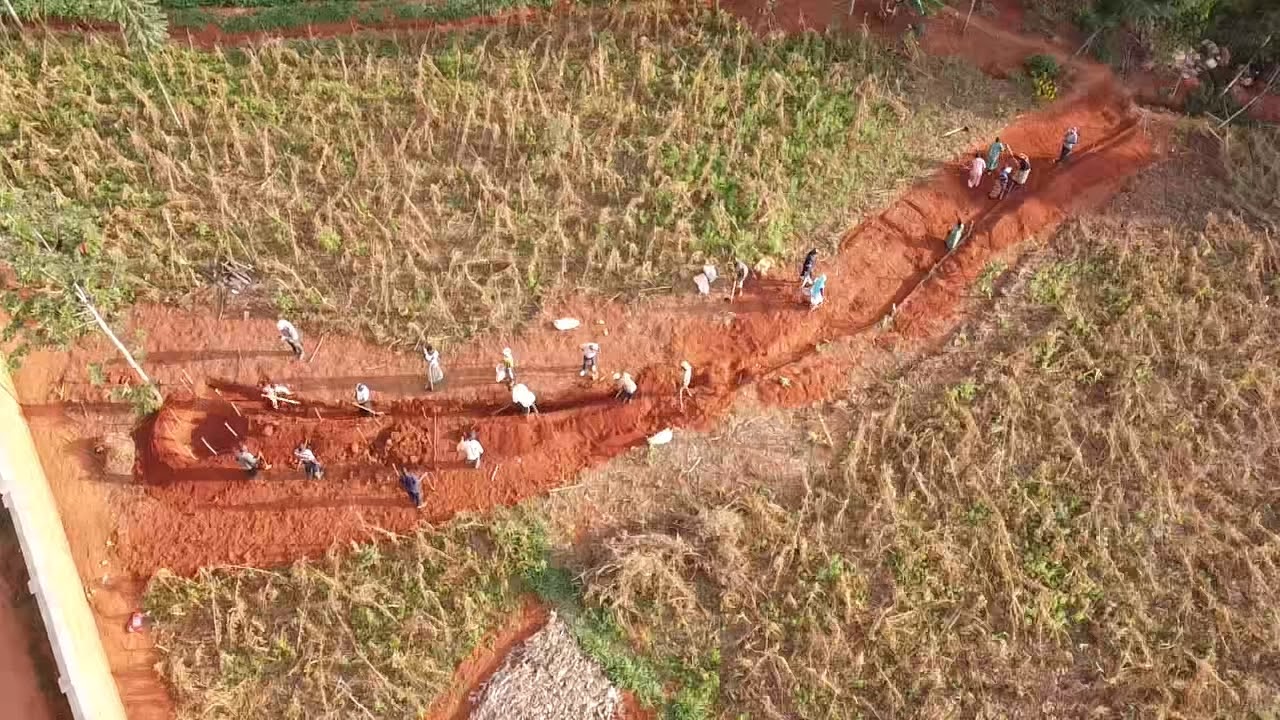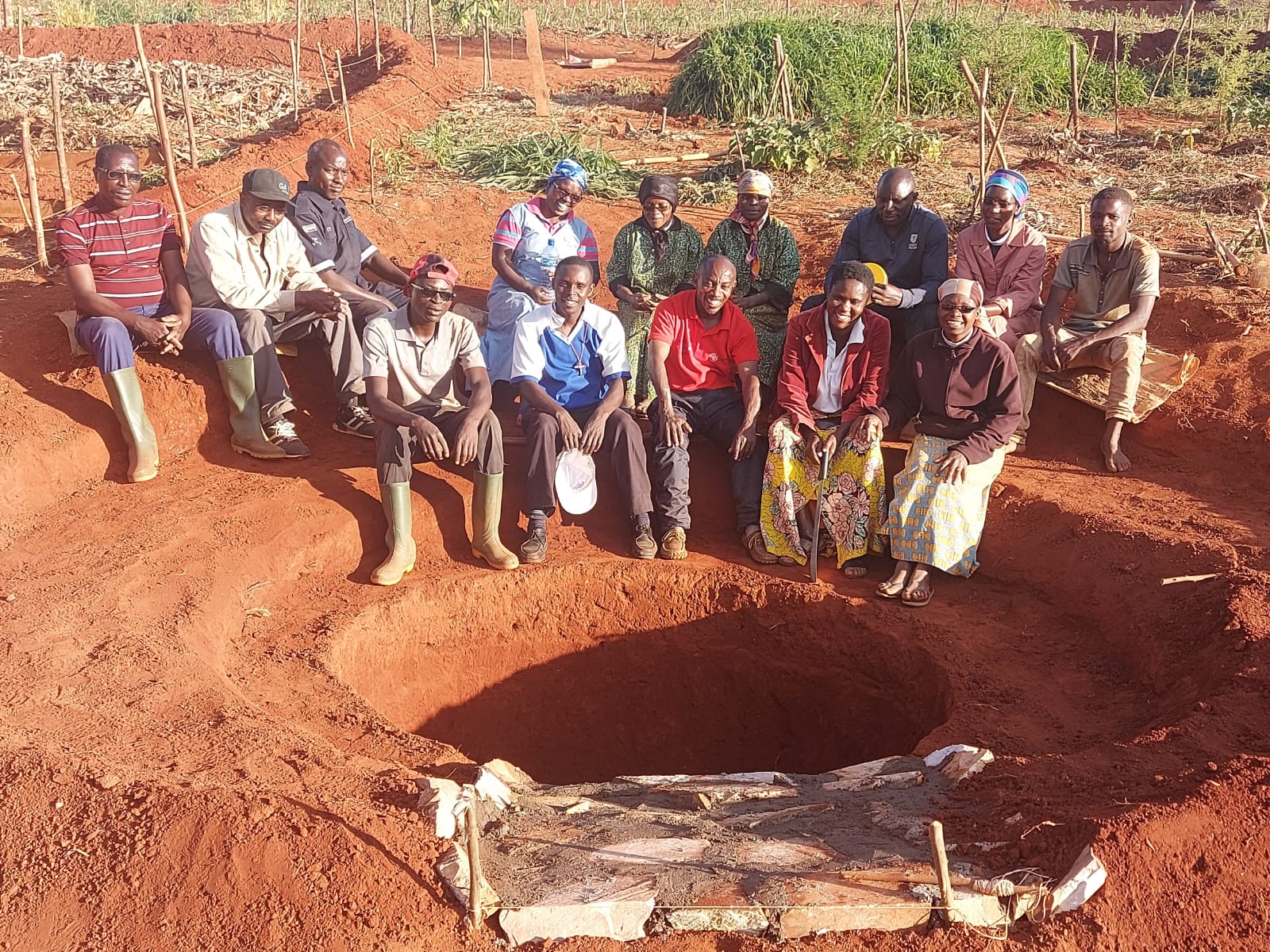
Second part of the field report from Burundi
The opportunities of permaculture for agriculture in Burundi
After sharing my first impressions of the country and its people in the first part of my field report, in this part, I will be focusing on the project area and its transformation according to the principles of permaculture .
Permaculture is a holistic approach within regenerative agriculture. On the one hand, it tries to use natural processes and procedures on micro level. On the other hand, it follows a philosophy and ethics according to the three principles:
- Eathcare (care for the earth and life),
- Peoplecare (care for the people),
- Fairshare (fair sharing and limited use of resources).
Our project area in Gitega, as well as much other parts of the country, is affected by severe erosion and depleted soils as a result of inappropriate cultivation. Permaculture is still a quite unknown agricultural system in Burundi. Permaculture can overcome many challenges of local agriculture with relatively simple and efficient approaches. Therefore, not only the local project team is very interested in permaculture, but also other agriculturally oriented actors like the national university, local authorities and international NGOs.
Usually, the first step of a common permaculture project is to create the design for the area to be transformed. For this, the area - and the processes taking place regarding climate, soil, people, etc. - must be closely observed and understood. A design map is subsequently created that specifically utilizes these natural processes to plan the best possible production system in terms of sustainability and efficiency. This is followed by the implementation of the design with its individual design elements.
Based on the design, the following measures or design elements have been implemented so far:
- Erosion swales have been constructed to keep the soil in place.
- The soil is permanently covered with a wide range of plants to promote biodiversity and reduce further erosion.
- We have identified various nitrogen-fixing plants - including shrubs and trees - to increasingly replace the eucalyptus which was planted in excess. The eucalyptus is valued for its rapid growth, but increasingly leaches the soil and thus is ecologically counterproductive to a sustainable development towards its primary goal: a location of food production.
- To improve soil fertility, we have developed a sophisticated nutrient management system to be independent from external inputs - including the use of charcoal (terra preta) and composting toilets, waste recycling, and increased integration of livestock (cows, pigs, goats, chickens, and rabbits).
After arriving in Gitega, the first tour on the project area and the review of the design plan, the theoretical introduction started with a project overview and the basics of permaculture. Already since the beginning of the project in July 2020, we have been working with pre-selected people from Gitega, who are connected to the African Missionaries and their Christian institutions related to education and social issues. The high motivation of the local project team became clear quickly - for the physically demanding practical training part, about 20 invited people have taken leave from other obligations for the first two weeks of June 2021 to be fully engaged with the project activities. They will learn more about the theory where necessary and spend most of the training on the project site to implement the design they have worked out - thus theory and practice can be combined in an efficient and goal-oriented way.
Another goal of our stay is the identification of a local project team, which should continue to develop the "AgriSocial Education and Training Center" independently in future. For this purpose, initial interviews will be held with the all individuals in order to understand their motivation, skills and abilities as well as their time capacities and to establish culturally acceptable organizational structures for a long- lasting impact on Burundian agriculture.
In the third and final part of my field report, I will be sharing some insights of the local project members who has been working on the project not only the past two weeks but since July 2020.






